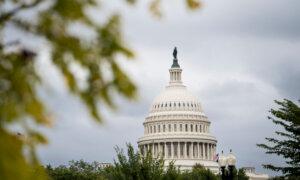The agency’s acting director said the agency over-relied on mobile devices.
The U.S. Secret Service failed to give clear guidance to local law enforcement and suffered communication failures on July 13 before a man fired shots at former President Donald Trump, Secret Service Acting Director Ronald Rowe told a press conference on Sept. 20.
Summarizing an internal review of what unfolded in Butler, Pennsylvania, Rowe said that “this was a failure on part of the United States Secret Service” and that lessons learned from the experience will help propel the service from a reactive to a proactive posture.
The Secret Service was stationed in a room that was separate from the Butler County Emergency Services command post, and some local officers did not know that there were two separate communication centers, the review found.
As a result, officers “were operating under a misimpression that the Secret Service was directly receiving their radio transmissions,” the agency said in a statement summarizing the review findings.
Secret Service officials also found that agency personnel never communicated with law enforcement stationed on the rooftop of the AGR building located near the rally site, from which the shooter fired shots at Trump. There was also never a conversation about stationing Secret Service personnel on that roof, according to the review.
The communication gaps included the use of multiple radio channels by officers and agents and an overreliance on mobile devices, which resulted in some officials remaining unaware of key information, Rowe said.
At 6:10 p.m. on the day of the shooting, the Secret Service informed agents that local police were addressing an issue on the outer perimeter of the site. Around the same time, the Secret Service security room in a phone call told the special agent in charge of the counter snipers that there was a person on the roof of the nearby AGR building.
“That vital piece of information was not relayed over the Secret Service radio network,” Rowe said.
Just moments later, a local officer confronted a man later identified as Thomas Crooks but disengaged after he pointed his weapon at the officer. The Secret Service agent in charge of the site called the assistant special agent for the site around that time to try to figure out what was going on, according to the review. During the call, shots rang out.
Crooks fired two series of shots at 6:11 p.m. He was taken out by a Secret Service countersniper before the clock struck 6:12 p.m., according to the review. Four people were struck by bullets, including Trump. One person died.
The Secret Service team protecting Trump may have opted to move the former president if they had been made aware that law enforcement was trying to locate the shooter in the minutes before the shots were fired, the Secret Service also said. Trump was not moved until after the shots were fired.
Rowe promised the Secret Service would learn from the failures that led up to the assassination attempt.
An alleged second attempt on Trump’s life was interrupted by Secret Service agents over the weekend in Florida, according to authorities. They have said that the suspect, who did not get off any shots, was successfully disrupted by personnel following protocol.
The final report on the review of the Butler assassination attempt is expected to be finalized and released in October.
Jackson Richman contributed to this report.
Original News Source Link – Epoch Times
Running For Office? Conservative Campaign Consulting – Election Day Strategies!


